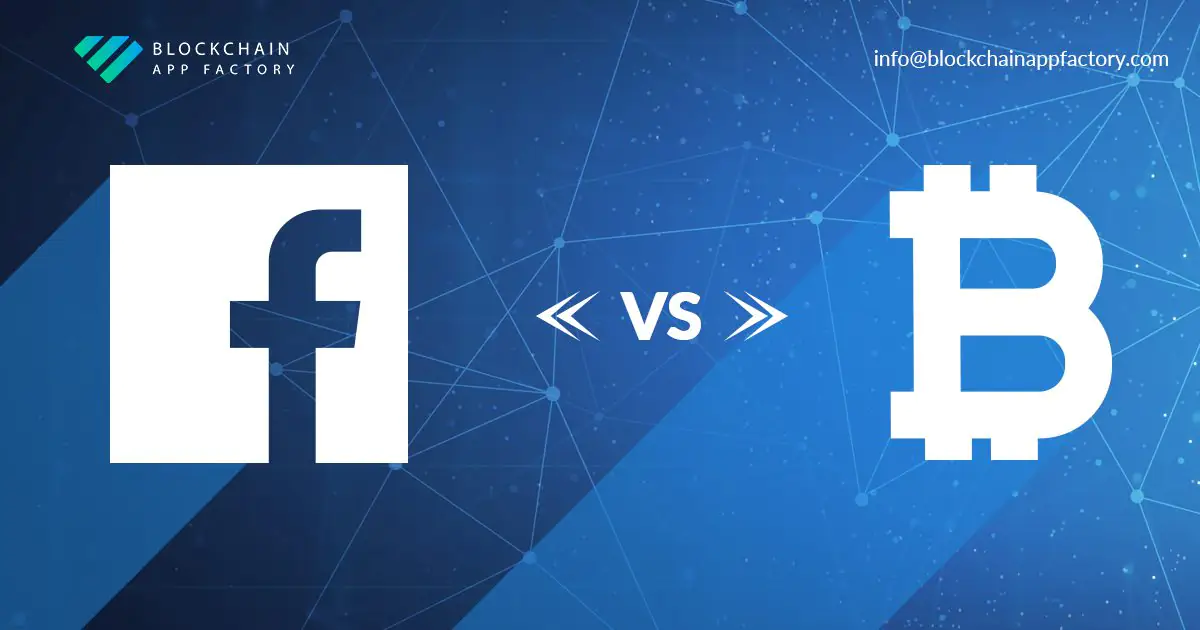Let’s Give You an Overview of Libra!
Libra is the latest among the cryptocurrencies built on the blockchain with its proof of stake protocol. It is backed by its reserve containing a basket of low-volatile assets.
So, What Does Low Volatility Do?
Though not designed as a Stablecoin in crypto-terms i.e. pegging against single fiat currency, Libra is pegged to four relatively steady currencies such as US Dollar(USD), Pounds(GBP), Euro(EUR), and Yen (JPY).
Assets on Libra
There are three key elements Libra is looking into for inclusion of assets into their basket :
- Fiat with free float and not tied/soft-pegged to any other currency
- Assets must be recognized by public institutions(Fiat Currency) or freely accessible(commodities)
- Universal recognition of the assets with a programmatically quotable value
Technology
Consensus Algorithm
Libra runs on their native blockchain with Proof of Stake protocol where the nodes are run by the participants in the consortium. Nodes rely on the Byzantine Fault Tolerance(LibraBFT) which is a modification of the Hotstuff framework.
Smart Contract
Smart Contracts are written on the Move programming language on the Libra blockchain. As the Whitepaper of Libra says Move is an “executable bytecode language used to implement custom transactions and smart contracts”.
With more than 100 participants in the consortium, the use cases built-in in into the smart contracts are exhaustive. The tools needed for enterprise applications are sourced from Libra for development.
The Two Token System allows participation through the governance token called Libra Investment Token(LIT). Organizations can participate in the governance without having the minimum holding of $10 million of LIT.
The low barrier to entry ensures incentives for wider adoption of Libra and blockchain technology. When compared to J.P. Morgan’s Quorum’s Permissioned network, Libra is designed for the wider acceptance of the permissionless blockchain network.
What is the Impact of Libra?
Libra will have both local and global impact in the short, medium, and long term. In the short term, Libra-like coins will disrupt or have the incentive to disrupt traditional financial institutions, especially in the payments industry. This is due to the faster, more secure, and scalable way to execute transactions.
With Ripple & J.P. Morgan’s Quorum already being tested by the banking industry, the Libra & Calibra wallet interface will find its way to Facebook, Instagram, and WhatsApp. In the medium term, Facebook has invested its resources into providing infrastructure requirements such as Website Authentication, Mobile App Development, and onboarding users into cryptocurrency.
In addition, mass adoption will be encouraged through arbitrage opportunities, increased competition among stablecoins, and attracting larger institutional players to endorse blockchain. In doing so, the learning curve for the layman is reduced for acceptance of blockchain and cryptocurrency.
In the long term, competing with Google, Libra wants to reshape the way we look at the Payments industry. In addition, by lowering capital requirements worldwide it could contribute to developing a monetary policy. The real challenge Libra faces in the long term is that monetary policy and economic decisions will move from public representatives to private corporations. This will hinder consumer rights, thereby, leading to a monopolistic ecosystem for export/import of goods.
It would be interesting how Libra can overcome the regulatory hurdles while competing with/convincing a banking institution to accept this framework. While we can only predict that industries like Retail, BFSI, and Payments will be disrupted, it is difficult to predict if they will develop their ICO, to reach the general public. Facebook has laid a foundation for wider adoption of blockchain and crypto-ecosystems by businesses of all scales and retail users alike.
The significance of Libra in the crypto landscape
Libra, now known as Diem, was initially proposed by Facebook (now Meta Platforms, Inc.) in June 2019 as a digital currency designed to be used on its social media platform and across the internet. It was met with significant attention and scrutiny due to Facebook’s massive user base and the potential impact on the global financial system. While the project has faced various challenges and changes, it remains significant in the crypto landscape for several reasons:
- Recognition of Cryptocurrency Potential: Libra’s announcement by a tech giant like Facebook served as a wake-up call for governments and financial institutions worldwide. It highlighted the potential of cryptocurrencies and stablecoins to disrupt traditional financial systems and sparked discussions about the need for regulatory frameworks in the crypto space.
- Stablecoin Innovation: Libra aimed to be a stablecoin, which is a cryptocurrency designed to minimize price volatility by pegging its value to a stable asset, like a fiat currency or a basket of assets. This innovation raised interest in the concept of stablecoins, which have since become a significant part of the crypto ecosystem.
- Financial Inclusion: Facebook’s Libra project initially positioned itself as a solution for the unbanked and underbanked populations, potentially providing them with access to financial services. While Diem has evolved, the goal of financial inclusion remains important in the crypto landscape, with various projects aiming to reach underserved populations worldwide.
- Regulatory Scrutiny: Libra’s announcement led to intense scrutiny from regulators and central banks, leading to delays and changes in the project’s design. This scrutiny brought the need for regulatory clarity and oversight in the crypto industry to the forefront of discussions.
- Private Sector Innovation: Libra demonstrated that major tech companies can innovate and disrupt traditional finance. This has encouraged other tech giants and financial institutions to explore their own digital currency and blockchain initiatives, contributing to the broader adoption of blockchain technology.
- Evolving Project: While the original Libra project faced setbacks and changes, it evolved into Diem, which has sought to address some of the concerns raised by regulators and stakeholders. The project continues to adapt to the evolving crypto and regulatory landscape, making it a case study for the intersection of technology and finance.
- Global Impact: Diem, if successful, could have a global reach due to Facebook’s vast user base. This potential for widespread adoption could further cement its significance in the crypto landscape.
In summary, Libra (Diem) played a pivotal role in drawing attention to cryptocurrencies, stablecoins, and the need for regulatory frameworks in the crypto space. While the project itself has evolved and faced challenges, its legacy continues to influence discussions and developments in the broader cryptocurrency landscape.
Key differences between Libra and traditional cryptocurrencies
Libra, which has since been renamed Diem, differs from traditional cryptocurrencies in several key ways:
- Centralization: One of the most significant differences is centralization. Traditional cryptocurrencies like Bitcoin and Ethereum are decentralized networks, meaning they operate without a central authority. In contrast, Diem is designed to be a centralized digital currency governed by the Diem Association, a consortium of companies that initially included Facebook (now Meta Platforms, Inc.) and other prominent partners. This centralization has been a point of controversy and regulatory concern.
- Stability: Diem is designed as a stablecoin, which means its value is intended to be stable and not subject to the extreme price volatility seen in traditional cryptocurrencies like Bitcoin. To achieve this stability, Diem is backed by a reserve of assets, including a basket of fiat currencies and short-term government securities. Traditional cryptocurrencies, on the other hand, can experience significant price fluctuations.
- Purpose: Diem was initially positioned as a digital currency for facilitating online transactions and peer-to-peer payments within Facebook’s ecosystem and across the internet. Traditional cryptocurrencies serve a broader range of purposes, including store of value, censorship-resistant transactions, and smart contract execution.
- Regulation and Compliance: Diem has been designed with regulatory compliance in mind, and its creators have engaged with regulators to address concerns. Traditional cryptocurrencies often operate in a more decentralized and permissionless manner, making them challenging to regulate and control.
- Privacy: Diem is expected to incorporate anti-money laundering (AML) and know-your-customer (KYC) procedures, which could reduce privacy compared to traditional cryptocurrencies, which can be more pseudonymous or even anonymous depending on their design.
- Technology: While both Diem and traditional cryptocurrencies use blockchain technology, they differ in the consensus mechanisms and underlying technologies. For example, Diem initially proposed a move towards a permissioned blockchain, where only approved entities can validate transactions, in contrast to the permissionless nature of many traditional cryptocurrencies.
- Development Community: Traditional cryptocurrencies like Bitcoin and Ethereum have vibrant open-source development communities with contributions from volunteers worldwide. Diem’s development is led by the Diem Association and its partners, which could result in different priorities and development strategies.
- Use Cases: Traditional cryptocurrencies have a wide range of use cases beyond peer-to-peer payments, including decentralized finance (DeFi), non-fungible tokens (NFTs), and more. Diem, at least in its initial design, is primarily focused on digital payments and transactions.
- Decentralization of Governance: Traditional cryptocurrencies often have decentralized governance models where decisions are made through consensus mechanisms or token holder voting. Diem’s governance, on the other hand, has a more centralized structure with member organizations making key decisions.
In summary, the key differences between Diem (formerly Libra) and traditional cryptocurrencies revolve around centralization, stability, purpose, regulation, privacy, technology, development, use cases, and governance. These distinctions reflect the unique goals and design principles of each and contribute to their distinct roles in the broader digital currency landscape.
Libra vs. Bitcoin: A Comparative Analysis
Certainly, here’s a comparative analysis of Libra (now Diem) and Bitcoin:
Origin and Ownership:
-
- Libra: Libra was initially proposed by Facebook (now Meta Platforms, Inc.) and was later rebranded as Diem. It was conceived by a consortium of companies, making it a project led by a group of private entities.
- Bitcoin: Bitcoin, on the other hand, was created by an anonymous person or group of people using the pseudonym Satoshi Nakamoto. It’s a truly decentralized network with no central entity or organization controlling it.
Centralization vs. Decentralization:
-
- Libra: Diem is designed to be a centralized digital currency governed by the Diem Association. This means that a consortium of companies has control over the currency and its policies.
- Bitcoin: Bitcoin is a decentralized cryptocurrency. It operates on a peer-to-peer network where no single entity has control. Decisions are made through consensus among network participants.
Purpose and Use Cases:
-
- Libra: Diem is primarily designed for online transactions, peer-to-peer payments, and facilitating commerce within the Facebook (Meta) ecosystem and across the internet.
- Bitcoin: Bitcoin’s primary use case is as a digital store of value and a medium of exchange. It is often compared to gold as “digital gold” and is used for a wide range of purposes, including remittances, investment, and as a hedge against inflation.
Stability and Volatility:
-
- Libra: Diem is intended to be a stablecoin, meaning its value is pegged to a basket of fiat currencies and other assets to minimize price volatility.
- Bitcoin: Bitcoin is known for its price volatility, with its value subject to significant fluctuations over short periods. It is not designed to be a stable store of value.
Privacy and Transparency:
-
- Libra: Diem is expected to incorporate anti-money laundering (AML) and know-your-customer (KYC) procedures, which could reduce privacy compared to Bitcoin, where transactions are pseudonymous.
- Bitcoin: Bitcoin transactions are publicly recorded on a transparent blockchain, but the identities of users are pseudonymous. It provides a degree of privacy compared to traditional financial systems.
Regulatory Approach:
-
- Libra: Diem has actively engaged with regulators and policymakers to address concerns and ensure compliance with existing financial regulations.
- Bitcoin: Bitcoin operates in a more decentralized and permissionless manner, making it challenging for regulators to control or regulate directly.
Development Community and Governance:
-
- Libra: The development of Diem is led by the Diem Association and its partners, giving it a more centralized governance structure.
- Bitcoin: Bitcoin has a decentralized development community with contributions from volunteers and a consensus-based governance model for protocol changes.
Adoption and Network Effect:
-
- Libra: Diem could benefit from the massive user base of Facebook (Meta), potentially achieving widespread adoption quickly.
- Bitcoin: Bitcoin has a strong network effect and is widely recognized and accepted as a digital asset and means of exchange.
In summary, Libra (Diem) and Bitcoin differ significantly in terms of centralization, purpose, stability, privacy, regulatory approach, and governance. These differences reflect their unique origins, goals, and design principles, and they cater to distinct use cases within the broader cryptocurrency landscape.
Libra and the World of ICOs
Libra, which has since been renamed Diem, and Initial Coin Offerings (ICOs) are two distinct phenomena within the world of cryptocurrencies and digital assets, but they share some connections and differences:
Libra (Diem):
- Nature: Diem is a digital currency project proposed by Facebook (now Meta Platforms, Inc.) and later transformed into the Diem Association, which initially aimed to create a stablecoin for online transactions and payments.
- Ownership: Diem is a project led by a consortium of companies, making it a more centralized initiative. These companies govern and control the development and policies of Diem.
- Regulation: Diem has actively engaged with regulators and policymakers to address concerns and ensure compliance with existing financial regulations. It has adopted a regulatory-friendly approach, which is a significant departure from many ICOs.
- Purpose: Diem was primarily designed to facilitate online transactions and peer-to-peer payments within the Facebook (Meta) ecosystem and across the internet. Its primary focus is on providing a stable and efficient means of exchange.
Initial Coin Offerings (ICOs):
- Nature: ICOs are a fundraising method used by blockchain and cryptocurrency projects to raise capital. They involve the issuance and sale of digital tokens to investors and contributors.
- Ownership: ICOs are typically initiated by startups or development teams, and the ownership and governance of the project often remain with these entities. However, token holders may have some influence over the project depending on the token’s design.
- Regulation: ICOs have faced regulatory challenges and scrutiny in various jurisdictions, with some being deemed securities offerings and subject to securities regulations. The regulatory environment for ICOs has evolved and varies from country to country.
- Purpose: ICOs serve as a means to raise capital for various blockchain and cryptocurrency projects. The tokens sold during ICOs can have a wide range of use cases, from representing ownership in a project to serving as utility tokens within a specific ecosystem.
Connections and Differences:
- Regulatory Engagement: Both Diem and ICOs have had to navigate regulatory challenges, but Diem has taken a more proactive approach by engaging with regulators and aiming for compliance. Many ICOs, especially in the past, conducted token sales with less regulatory oversight.
- Centralization vs. Decentralization: Diem is designed to be more centralized, with a consortium of companies governing it. ICO projects vary widely in their degree of centralization, with some aiming for decentralized governance.
- Purpose: Diem primarily focuses on providing a stable digital currency for transactions, while ICOs serve as a fundraising method for a diverse range of projects, including cryptocurrencies, tokens, platforms, and applications.
- Ownership and Governance: Diem’s governance is in the hands of the Diem Association and its partners. In contrast, ICO projects often involve varying levels of community participation and influence over project development.
In summary, Diem and ICOs are distinct entities within the cryptocurrency space, with different purposes, ownership structures, and regulatory approaches. While Diem seeks to provide a stable digital currency within a centralized framework, ICOs are a method for fundraising in a broader range of blockchain and cryptocurrency projects, each with its own unique goals and characteristics.
Conclusion
In conclusion, Libra, now known as Diem, represents a notable initiative in the cryptocurrency landscape with its focus on creating a stable digital currency for online transactions. Its centralized nature, engagement with regulators, and the primary purpose of facilitating online payments set it apart from traditional cryptocurrencies like Bitcoin. Diem’s association with Meta Platforms, Inc. (formerly Facebook) also gives it a unique advantage in terms of potential user adoption and integration within the Meta ecosystem.
On the other hand, Initial Coin Offerings (ICOs) are a distinct fundraising method used by various blockchain and cryptocurrency projects. ICOs have a diverse range of purposes, from funding new cryptocurrencies to supporting decentralized applications, and they vary in terms of regulatory compliance, governance, and centralization.
The crypto landscape continues to evolve, with Diem and ICOs representing different facets of this dynamic space. While Diem focuses on stability and compliance, ICOs serve as a means for startups and projects to raise capital and develop innovative blockchain-based solutions. Both have faced regulatory challenges, but they highlight the diversity of approaches and purposes within the broader world of cryptocurrencies. The crypto industry remains a rapidly changing and influential sector, and the interactions between projects like Diem and ICOs will continue to shape its future.










